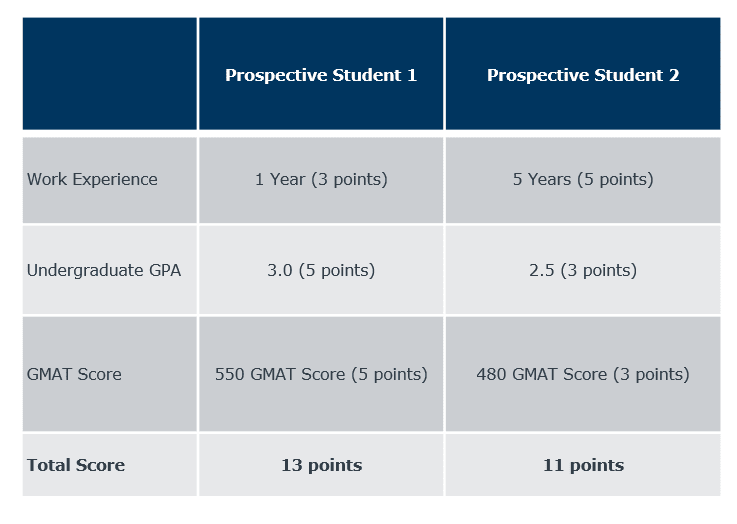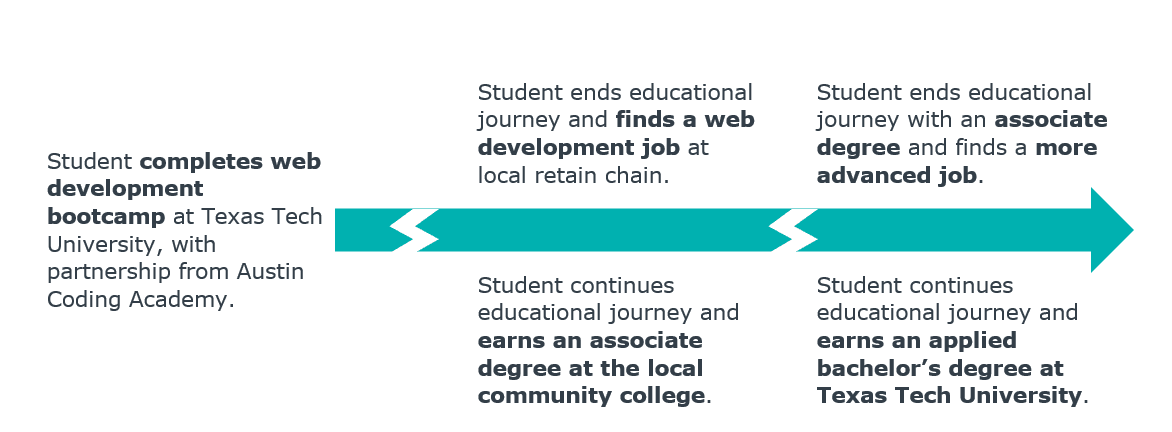3 tips for innovative and successful program design
Case studies from graduate, adult, and certificate programs
January 8, 2021, By Brynna Morgan, Associate Director
Even before the coronavirus pandemic rocked higher education, colleges and universities were facing immense challenges that required them to change their traditional way of conducting business.
Competition has increased both from universities expanding their markets and from non-traditional organizations offering just-in-time training at very low costs, such as Google’s newly launched career certificates. Students began demanding faster time-to-completion, expanded evidence of outcomes, and relevant skills to prepare them for today’s workforce—all of which strained the typical program-management playbook. And the evolution of local markets and national industries accelerated as they integrated more technology into their workflows and sought different-in-kind talent.
These external forces, combined with COVID-19, have elevated the importance of designing programs that not only attract and retain graduate, online, and adult students, but also prepare students to meet newly emerging academic and professional goals.
Below are three principles to consider when developing new programs or reformatting existing programs to appeal to today’s professionals.
1. Eliminate false barriers to entry
While admissions requirements can convey selectivity or encourage persistence among students, many institutions list extraneous admissions criteria that they have little intention of enforcing.
Across our research, we heard of countless program administrators waiving admissions requirements on an ad hoc or by-request basis, including GPA minimums, required graduate admissions tests, and application fees. But determined applicants can often find their way around these false barriers to entry. And these publicized requirements may needlessly deter other applicants and ultimately narrow the admissions funnel.
-
24%
of students did not apply to a school because it required an application fee; 19% did not apply to a school because it listed a required GPA
After all, adult students typically spend less than two hours on program applications. Many are hesitant to take expensive, time-consuming graduate admissions tests. They also typically apply to two or fewer schools, so stringent application requirements could reduce program inquiries, applications, and enrollments as students choose other programs with less visible constraints.
Survey: here’s how COVID-19 has impacted adult learners’ journey to enrollment
Case Profile: Tennessee Tech University’s Admissions Matrix
To ensure application requirements shut out as few applicants as possible while still controlling for quality, Tennessee Tech University developed a matrix for admittance into their online Master of Business Administration program.
The matrix considers a diverse range of applicant-quality indicators, including prior work and academic experiences, undergraduate performance, standardized test scores, and any other unique characteristics of a student’s application.
Matrix criteria and examples:
- Work experience, ex. number of years working professionally
- Academic experience, ex. previous postgraduate degrees
- Overall undergraduate GPA, ex. GPA on a 4.0 scale
- Standardized test scores, ex. GMAT, GRE
- Discretionary points, ex. resume, statement of purpose
To be admitted to Tennessee Tech’s MBA program, applicants must earn a minimum of 10 points on the matrix. Because prospective students can earn points from a variety of different life experiences, individuals from diverse backgrounds can successfully compete for admission to the MBA program.
For example, both a student with years of work experience but a less-than-stellar academic record and a student with very limited work experience but a strong undergraduate GPA could be admitted to Tennessee Tech’s MBA program:

Ultimately, the application matrix limits the amount of guesswork from prospective students and makes it clear which audiences can find success within the program.
2. Create inviting on-ramps into time-intensive programs
Bootcamps are far from a new offering. From 2014 to 2019, the number of students graduating from coding bootcamps alone increased 954 percent. And it’s no wonder enrollment in bootcamps has grown. Bootcamps allow students to gain concrete skills within weeks or months instead of years, which is something most traditional certificate and degree programs cannot deliver.
However, bootcamps are usually offered as a standalone credential. They are an island unto themselves. They may provide a professional pathway for participants, but any student looking to stack them into further academic or educational pursuits at a college or university will find themselves out of luck.
Case Profile: Texas Tech University’s Stackable Bootcamps
To combat this barrier for students, Texas Tech University partnered with Austin Coding Academy to create the Texas Tech Coding Academy. Within this new program, Texas Tech developed a web development bootcamp that would serve as an on-ramp to additional credentials.
Students who complete the web development bootcamp at Texas Tech can use this workforce credential to earn credits at their local community college toward an applied associate degree. Once a student earns their associate degree, they can transfer those credits to Texas Tech University and earn their applied bachelor’s degree.
With this sequenced format, students can easily earn the credential that fits their professional and educational needs rather than investing large sums into a bootcamp education that only provides them with a pathway into the workforce.
Additionally, by partnering with a local technical provider rather than a national organization, Texas Tech can provide benefits for its students and region, including a differentiated curriculum, targeted courses for local needs, and a say in the development of future topics that student audiences may be interested in, such as cybersecurity.

As the landscape for professional career education becomes more crowded, student demand evolves, and the economy requires more specialized and diverse skills, colleges and universities must innovate their current offerings to remain effective. By reevaluating admissions requirements, developing educational and professional pathways within programs, and offering personalization options through degrees, institutions can design innovative credentials that not only attract students but also prepare them for both educational and professional success.

More Blogs

Our New Staffing Model Playbook for Higher Ed CMOs

Your digital marketing strategy is probably outdated—here’s how to fix it
